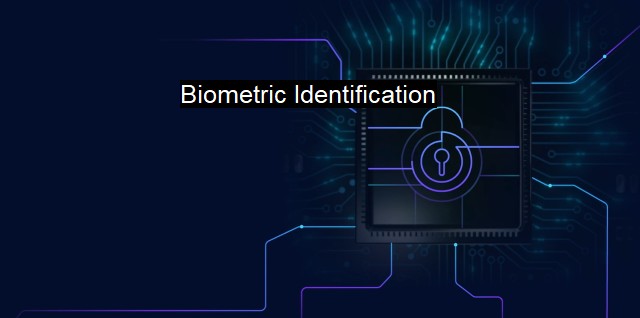What is Biometric Identification?
Enhanced Cybersecurity: The Power of Biometric Identification in Authentication and Identification
Biometric identification is a technology that's swiftly changing the cybersecurity landscape, significantly evolving the methods to protect data from increasingly advanced threats. Being a subdomain of biometric technology, biometric identification involves the automated process of recognizing an individual based on their distinct physiological or behavioral traits.Perceived as incredibly accurate and the next level in data security, biometrics identification plays an essential role in cybersecurity and antivirus sectors by adding an extra layer of protection against cyber threats. Simple forms of cybersecurity systems, such as password-protected resources, are becoming laughably fragile in the face of ongoing advances in hacking technologies. It has prompted greater use of biometrics in a bid to add an extra layer of impregnable safety.
The efficacy of biometric technology rides on the uniqueness of human physical and behavior-related characteristics. These consist of fingerprints, facial patterns, DNA sequences, voice pitch, hand measurements, the retina of the eye, or other unique aspects of the body. In theory, these characteristics, being one-of-a-kind, help to prevent unauthorized individuals from gaining access to personal or secure data.
Technologically, biometric identification uses mathematical and statistical techniques to map these unique traits, thus creating an individual's identity, a resilient virtual validator. An encryption of this identity is then saved on a network or system. When accessed later, the system validates the physical input against the stored, encrypted 'biometric key'— the main point of reference.
In a cybersecurity perspective, using biometric identification directly correlates with a stronger security posture. By adding biometric identification features to their repertoire, antivirus software can enhance its precision in recognizing trusted users and screening out malicious actors. Its use discourages hackers by offering a more considerable hurdle to pass through by using human characteristics as immovable security gatekeepers that even the most advanced malware and hacking attempts would find challenging to penetrate. Unlike alphanumeric passwords that can be algorithmically generated or guessed, biometric markers are anchor points that provide almost foolproof security mechanisms.
Possibly the clearest benefit of biometrics goes beyond this advantage. The primary benefit of biometric systems is their capacity to streamline access procedures and save a substantial amount of time for users. By removing traditional authentication methods like passwords and keys or smart cards, biometric identification processes make security protocol execution quicker and more straightforward, thus enhancing both convenience and productivity.
Nonetheless, it is equally important to note the potential drawbacks and challenges of the implementation of this technology in cybersecurity and antivirus mechanisms. Privacy concerns rank first in these issues. Biometric data, if hacked or stolen, can be exploited and misused, causing dire consequences. Unlike a password, human characteristics cannot be changed, revolutionizing the potential for security breaches.
The usage of biometrics also carries the question of error tolerance, false acceptance, and false rejection rates. The false recognition of an intruder as a legitimate user, defined as a false acceptance, would represent a severe security breach. By contrast, the system's rejection of a legitimate user falsely could potentially disrupt productivity and cause inconvenience.
Despite these possible pitfalls, the benefits biometrics bring in cybersecurity appear to far outweigh the challenges. Data breaches are growing increasingly expensive and disruptive, making companies strive to enhance their cybersecurity controls, including the addition of biometrics. With robust privacy policies and the further progress in data protection measures, biometric identification technology could mark a new horizon in the cybersecurity landscape. It offers a bold new mechanism against commonly-experienced hacking efforts that compromise passwords and similar security ammunitions, thus emboldening the security of data in industries where confidentiality and secrecy of information are of prime importance.

Biometric Identification FAQs
What is biometric identification and how is it used in cybersecurity?
Biometric identification is a security process where a person's unique physical or behavioral characteristics are used to verify their identity. In cybersecurity, biometric identification can be used to provide an additional layer of security to traditional authentication methods like passwords or PINs. Biometric identifiers are difficult to replicate, making it harder for hackers to gain access to sensitive information.What are the types of biometric identifiers that can be used for identification?
There are several types of biometric identifiers that can be used for identification, including fingerprints, facial recognition, iris recognition, voice recognition, and behavioral biometrics like typing rhythm or signature analysis.Is biometric identification more secure than traditional authentication methods like passwords?
Biometric identification can be more secure than traditional authentication methods like passwords because biometrics are unique to each individual and are difficult to replicate. However, it is important to note that biometric data can still be stolen or compromised, so it should always be used in conjunction with other security measures.What are the privacy concerns associated with biometric identification?
Privacy concerns associated with biometric identification include the potential misuse or mishandling of biometric data, the possibility of the data being stolen, and the risk of individuals being tracked or monitored without their knowledge or consent. It is important for organizations to implement strong security measures to protect biometric data, and for individuals to understand how their biometric data is being collected, stored, and used.| | A | | | B | | | C | | | D | | | E | | | F | | | G | | | H | | | I | | | J | | | K | | | L | | | M | |
| | N | | | O | | | P | | | Q | | | R | | | S | | | T | | | U | | | V | | | W | | | X | | | Y | | | Z | |
| | 1 | | | 2 | | | 3 | | | 4 | | | 7 | | | 8 | | |||||||